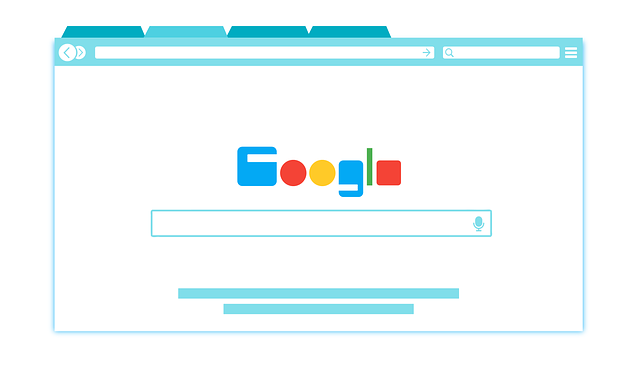Integrating a well-designed chatbot into an ecommerce site search is vital for enhancing customer experience and boosting sales. With 63% of customers using chat interfaces for product info, chatbots should efficiently navigate databases, offering accurate details, availability, pricing, and personalized recommendations. By offloading repetitive tasks, chatbots allow human agents to handle complex inquiries, fostering a natural conversational flow. Defining the chatbot's purpose, tailoring its personality, understanding customer pain points, selecting suitable technology (like Dialogflow or IBM Watson Assistant), and designing effective conversational flows are key steps in creating a successful ecommerce site search chatbot that drives user satisfaction and conversions.
Building a chatbot for your ecommerce platform can significantly enhance customer experience and drive sales. In this guide, we’ll walk you through the process of creating an effective ecommerce site search chatbot. First, we explore the intricacies of understanding ecommerce site search dynamics and seamless chatbot integration. Next, we define your chatbot’s role and target audience. We then delve into choosing the right technology and designing conversational flows for natural, productive interactions.
- Understanding Ecommerce Site Search and Chatbot Integration
- Defining Your Chatbot's Purpose and Target Audience
- Choosing the Right Technology and Building Blocks
- Designing Conversational Flows for Effective Interactions
Understanding Ecommerce Site Search and Chatbot Integration

In the realm of ecommerce, understanding your ecommerce site search is pivotal for building an effective chatbot integration. The typical ecommerce customer expects instant answers to their product-related queries, with 63% seeking information through chat interfaces. A well-integrated chatbot should seamlessly navigate your site’s database, offering accurate and relevant product details, availability, pricing, and even providing personalized recommendations based on browsing history. This involves mapping out common user queries and designing the chatbot to deliver precise responses that guide users towards their desired products.
By integrating a chatbot into your ecommerce site search, you’re not just enhancing customer experience but also optimizing sales potential. The bot can handle repetitive tasks, such as answering frequently asked questions, providing shipping information, or offering basic product descriptions, allowing human agents to focus on more complex inquiries. This integration should be designed with a user-centric approach, ensuring the chatbot’s conversational flow feels natural and intuitive, much like interacting with a knowledgeable sales associate.
Defining Your Chatbot's Purpose and Target Audience

Defining your chatbot’s purpose is a critical first step in building an effective assistant for your ecommerce site. Consider what tasks you want it to perform, whether that’s assisting with product searches, answering frequently asked questions (FAQs), or guiding users through the checkout process. A well-defined role will ensure your chatbot remains focused and efficient. For instance, if your target is to enhance search functionality, train your chatbot to understand user queries in natural language and deliver accurate, relevant product results.
Identifying your target audience is equally important. Different customer segments may have varying needs and expectations. Younger users, for example, might prefer a more casual, conversational tone, while older shoppers could appreciate a more direct and straightforward approach. Tailoring your chatbot’s personality and communication style to match your audience will create a more engaging and satisfying user experience. Keep in mind that understanding your customers’ pain points and preferences is key to making your ecommerce site search more intuitive and successful.
Choosing the Right Technology and Building Blocks

Choosing the right technology is a cornerstone in building an effective chatbot for your ecommerce site search. Start by evaluating existing chatbot platforms and frameworks, considering factors like ease of integration with your current ecommerce platform, customization options, and scalability to handle increasing user queries. Popular choices include Dialogflow, IBM Watson Assistant, and Microsoft Bot Framework, each offering unique features and benefits.
Once you’ve selected a robust technology, the next step is to design conversational flows that mimic human interactions. Map out potential customer journeys, from simple product inquiries to complex purchase scenarios. Utilize natural language processing (NLP) capabilities to enable your chatbot to understand user intent accurately. By combining these strategic choices with powerful technology, you’ll create a seamless and intuitive ecommerce site search experience for your customers.
Designing Conversational Flows for Effective Interactions

Designing effective conversational flows is a key aspect of building a successful chatbot for an ecommerce site. The goal is to create seamless and intuitive interactions that guide users towards their desired outcomes, whether it’s finding specific products or resolving queries. Start by mapping out potential user journeys, identifying common questions and tasks, and then crafting natural language paths for the chatbot to follow. Incorporate branching logic to accommodate different user inputs, ensuring a dynamic conversation that adapts to individual needs.
Consider the various touchpoints where customers might interact with your chatbot, from initial greetings to product recommendations and checkout assistance. Each step should feel intuitive and contextually relevant. Integrate ecommerce site search functionality into the conversational flow, allowing users to seamlessly query products by name, category, or specific attributes. By integrating these elements, you can create a cohesive experience that feels native to both your brand and the shopping process, ultimately enhancing user satisfaction and driving conversions.
Building a chatbot for ecommerce involves understanding your site’s search functionality, defining its purpose to enhance user experience, choosing the right technology, and designing intuitive conversational flows. By integrating these elements seamlessly, you can create an effective ecommerce site search assistant that engages customers, drives sales, and stands out in a competitive market.
